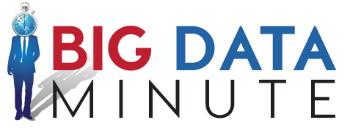
by Richard Batenburg | May 16, 2015 | Creating Competitive Advantage
In the never-ending pursuit of productivity, process automation is often an appealing solution for a business department or company division seeking greater efficiency and lower expenses. The ideal approach to the problem is often software that addresses the user’s unique issues, ensuring better fit, smoother deployment and easier adoption. But paradoxically, organizations in greatest need of such a solution may not have the budget for the process automation tools that will make the biggest impact, or have a culture that embraces change.
A smart process automation consultant can help you spread the cost, share the benefits, and become a company hero by extending the use of your department’s software to other user groups. After all, the same process automation tools can most likely support a variety of related processes.
Tools used to route and dispatch the service workforce can also be used for a sales force, often with just a minor tweak. For example, consider the large telecommunications company whose non-pay disconnect group needed help. This team cut off service at the utility pole for customers whose accounts were in arrears. They operated apart from normal field operations functions as well as the field audit group, which detected illegal connections and theft of service. But on examination, a savvy process automation consultant determined that the procedures followed by these three departments had a great deal in common, and that they both shared key elements with activities of the “feet on the street” sales team.
The new process automation tool designed for the field service department worked very well for the disconnect team and the field audit folks. Joining with the sales team, all three groups became a powerful part of the company’s sales force and drove out the cost of redundant systems. Instead of simply cutting off service at the utility pole for non-paying customers, the team began calling on these customers to offer them the opportunity to settle accounts and keep their service. The tap audit team likewise turned service thieves into honest, paying customers. Service technicians earned sales commissions, the CFO was ecstatic, and the department head who initiated the process automation received kudos from all quarters.
Although distinct from process automation, business intelligence software offers another attractive opportunity to spread the wealth – and costs – among multiple departments. This takes very little salesmanship, as staff members notice that their colleagues in the newly BI-empowered department suddenly have valuable data, and are no longer griping about reports that are out of date on delivery. The interest generated by water-cooler chat can easily lead to BI tools that benefit the entire organization.
Sharing process automation tools among work groups inevitably yields another valuable benefit: as information is shared, communication grows between user groups. As a result, departmental silos that may have developed over time begin to dissolve, leading to a more integrated, mission-focused organization.
An experienced process automation advisor can help you uncover opportunities within your organization to extend custom software applications. It’s just a matter of adopting a broad perspective, rallying support for a change to intercompany corporative processes and then preparing for applause.
To learn more about maximizing process automation, please visit www.cliintel.com or e-mail askcliintel@cliintel.com.

by Richard Batenburg | May 6, 2015 | Customer Satisfaction
Improving the customer experience is a universal goal in business, right along with revenue growth and return on investment. But although we all know that customer care is the road to customer satisfaction, it can be difficult to navigate the journey. Knowing what to avoid can help you reach your destination more quickly and easily. Following are a few roadblocks to steer clear of in your pursuit of exceptional customer care.
Avoid indirect routing: As you chart your path to customer satisfaction, the most direct route is the most effective. Customer care cannot be a departmental initiative – it must be a company-wide vision that starts at the top. Don’t allow your organization’s customer care mission to be seen as the responsibility of any single group. Rather, insist on a commitment to quality linking everyone to the customer, from C-level executives to front-line staff.
No bad drivers: The customer care agents who respond to customers are the face of your organization: don’t let the wrong hires damage your reputation. Make sure your hiring criteria emphasize customer empathy and a commitment to serve. Train employees to see every situation from the customer’s point of view, and to listen closely to assess the nature of the problem and relationship so they can give extra attention to your best customers. Reward employees who go the extra mile in customer care, for example, calling to tell the customer when a service technician is on the way. Impose consequences for failure to follow up.
No back-seat driving: No customer ever wants to be put on hold while an agent tracks down a manager for permission to do the right thing. Build a culture of empowerment in your company in which every customer care agent can resolve a customer problem without seeking an OK from on high. Give your customer care staff the authority to make customers happy.
Kick-the-can is not allowed: Do not allow a customer to be transferred from department to department in search of a resolution to his problem. Customer care demands one-stop shopping. Align goals across all departments and divisions so everyone knows that the goal is to delight the customer, not to get rid of him.
Are we there yet? (or: How do you know where you’re going if you don’t know where you’ve been?) Failure to measure virtually guarantees failure to improve. Exceptional customer care can only be achieved through scrupulous measurement and management. Establish a baseline of satisfaction. For example, a service organization might determine that no customer should have to call with a problem more than twice a year, and offer some kind of compensation if that baseline is exceeded. Establish triggers that signal potential dissatisfaction and build them into customer records. Survey customers regularly to determine their level of satisfaction, and follow up to measure improvement after a customer care transaction. As problems are resolved, be sure that you measure total customer care response time, including time spent waiting for parts or service delivery.
Don’t forget regular maintenance: As we tend to customer care problems, it’s easy to lose sight of those who don’t appear on the daily radar. Recognize and reward good customers, even if they don’t experience problems. Thank them for their business through special offers and rewards.
Great customer care doesn’t have to be expensive – it’s a matter of avoiding the detours along the way and convincing your customers that you’re the only company they want to buy from. Going the extra mile and respecting your customer’s time and concerns will ensure a positive experience for the customer and long-term benefit for your company.
To learn more about customer care, please visit www.cliintel.com or e-mail askcliintel@cliintel.com.








Recent Comments